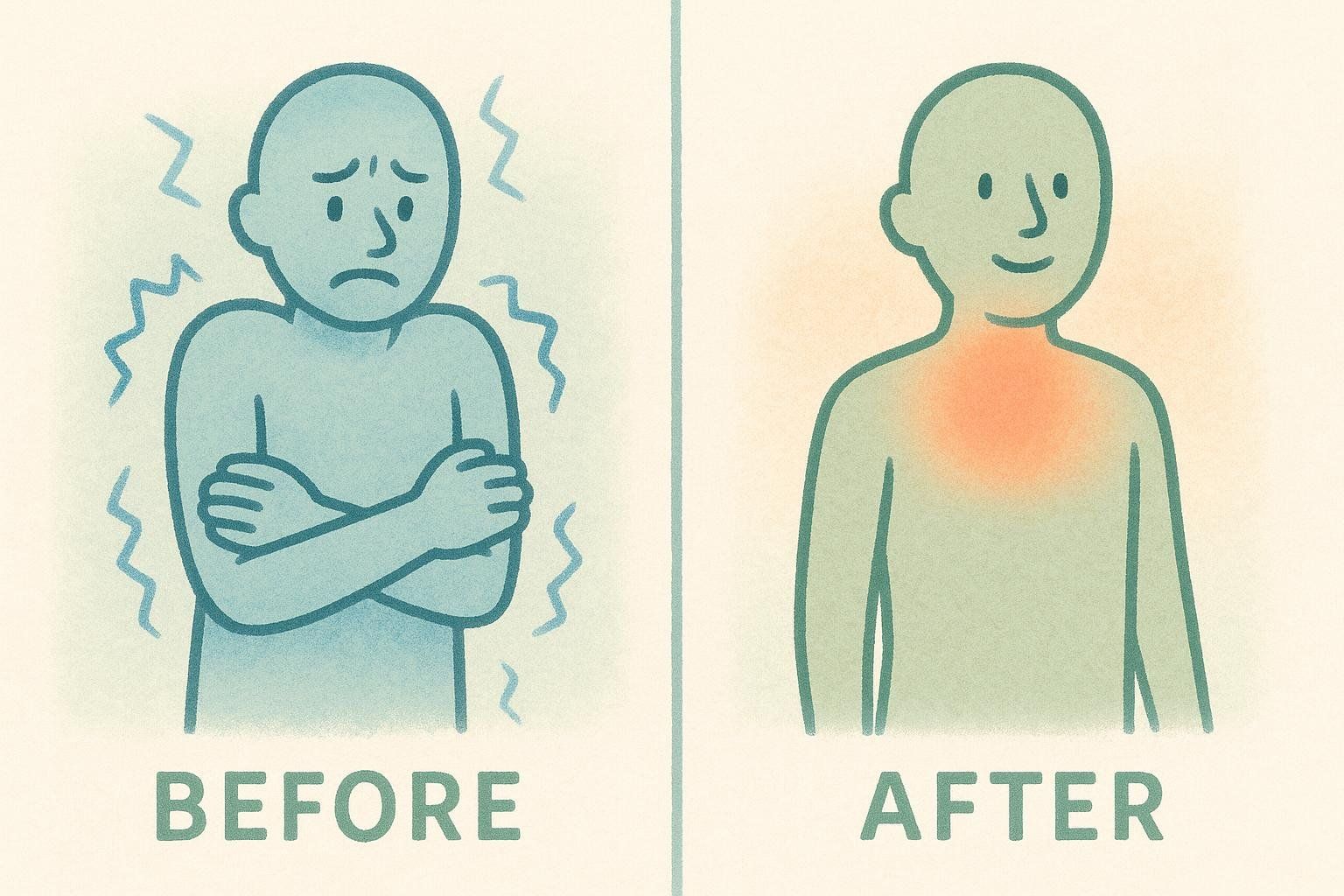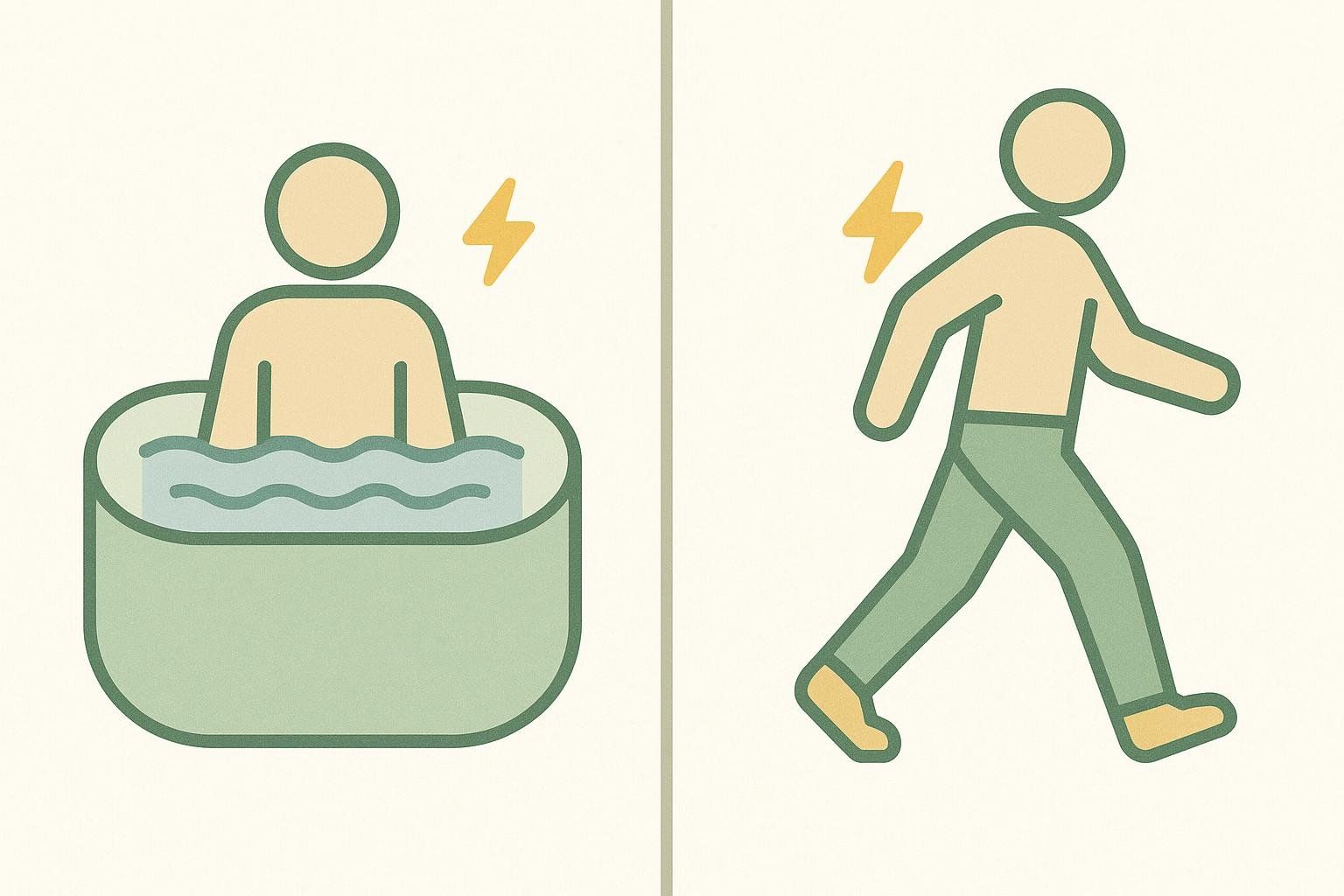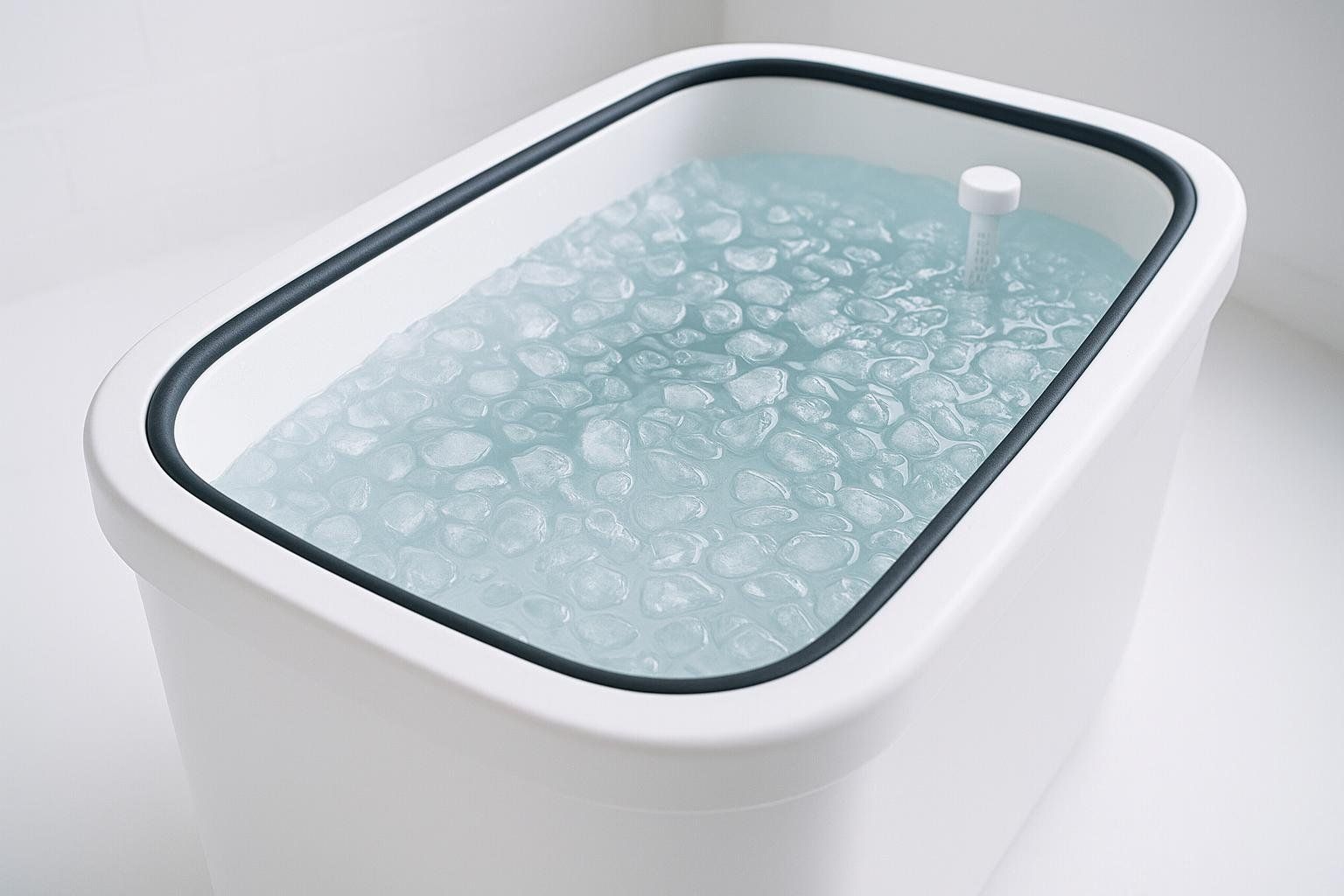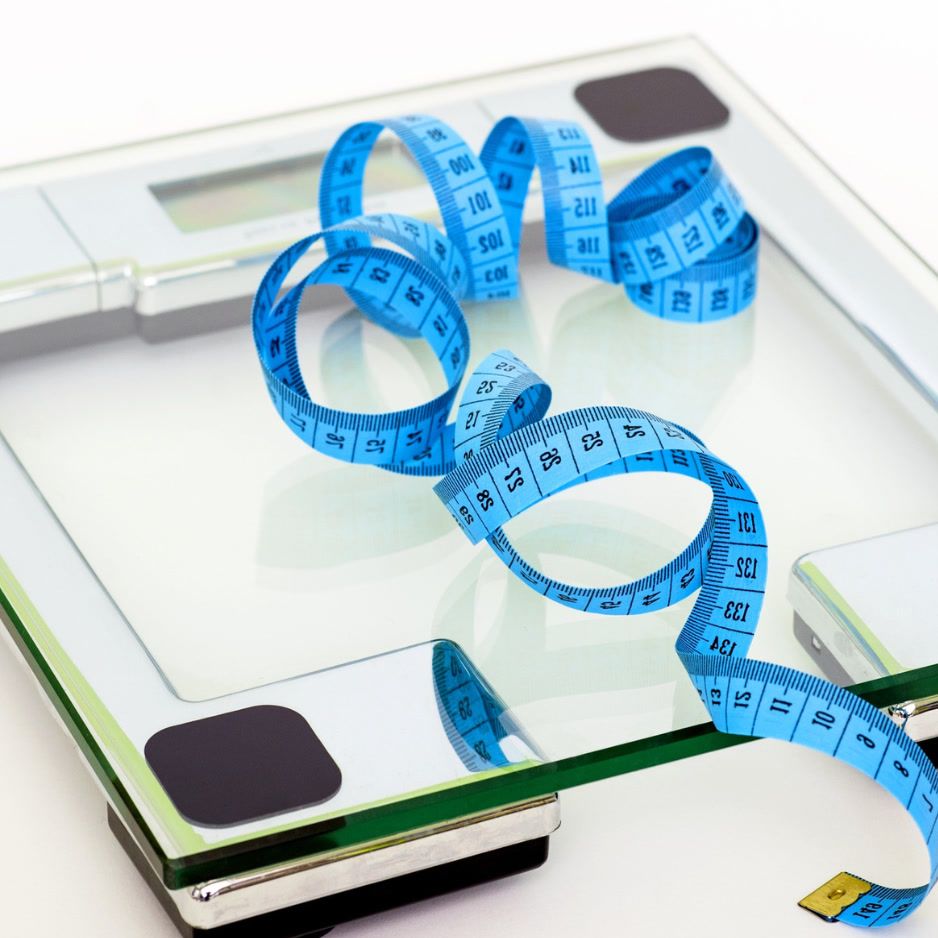What Is the Ice Hack for Weight Loss?

What Is the Ice Hack for Weight Loss? A Science-Backed, 2025 Update
Summary (TL;DR)
• The “ice hack” is strategic cold exposure—ice baths, cold showers, or chilled vests—designed to activate brown adipose tissue (BAT) and increase cold-induced thermogenesis (CIT).
• Recent research—a 2023 narrative review and a 2024 meta-analysis—shows structured cold protocols can raise daily energy expenditure by about 150–200 kcal and boost free-fat-acid mobilization, underscoring BAT’s role in metabolism (Scott et al., 2023; Tabei et al., 2024).
• The hack is not a magic bullet; it works best as a metabolic multiplier alongside diet, training, and DEXA-guided body-composition tracking.
• Skip extreme plunges if you have cardiovascular issues; start with milder methods like 60 °F showers.
• Scroll to the 3-Day Intro Mini-Hack, a 4-Week Progressive Protocol, and a CIT calorie-burn table.
Table of Contents
- Ice Hack 101: Origins & Viral Hype
- The Science: BAT vs. White Fat
- Mechanisms: How Cold Exposure Burns Calories
- 2023–24 Research Highlights
- Key Research Findings on BAT
- Protocol Options (From 3 Days to 4 Weeks)
- CIT Calorie-Burn Table
- Advanced Tips & FAQs
- Safety & Contraindications
- Track Results with a BodySpec DEXA Scan
- Key Takeaways
- References
Ice Hack 101: Origins & Viral Hype
So, what is the ice hack for weight loss? In simple terms, it’s any deliberate exposure to cold—usually water or air between 32 °F and 60 °F—designed to stoke your body’s internal furnace (BAT) and burn extra calories.
The trend has exploded on social media—TikTok videos tagged #icehack have amassed millions of views as of early 2025, and the number keeps climbing. Clips range from backyard ice-barrel challenges to ads for the “Alpine Ice Hack” supplement. While creators tout overnight belly-fat loss, the real story involves physiology and consistency.
Myth-Buster: Drinking ice water alone does not create a meaningful calorie deficit—you might burn only 15–20 calories per 16-oz glass, based on thermodynamic calculations and follow-up studies that found no large metabolic spike (Brown et al., 2006).
The Science: BAT vs. White Fat

| Tissue Type | Main Job | Color / Why | Calorie-Burn Potential |
|---|---|---|---|
| White Fat (WAT) | Energy storage | Pale—few mitochondria | Negligible |
| Brown Fat (BAT) | Heat production | Dark—mitochondria-dense | ≈150–200 kcal/day with cold-acclimation (Scott et al., 2023); peaks to ~300 kcal with β3-agonist activation (Cypess et al., 2015) |
| Beige Fat | Recruited BAT-like | WAT cells that “brown” | Emerging target |
Where Brown Fat Hides
Adults harbor small BAT deposits in the neck, shoulders, spine, kidney region, and collarbone area. PET-CT shows even people with higher body-fat can up-regulate BAT through repeated cold exposure.
Why Activate BAT?
When BAT fires, it siphons glucose and free fatty acids from the blood, improving insulin sensitivity and lipid profiles (Hanssen et al., 2015). Researchers view it as a promising lever for obesity and diabetes care.
Mechanisms: How Cold Exposure Burns Calories
- Shock Phase (0–5 min): Skin thermoreceptors sense the chill, sparking a sympathetic surge—heart rate and norepinephrine jump.
- Shiver Phase (5–15 min): Muscles vibrate, boosting energy burn up to 2× resting metabolic rate (Boschmann et al., 2003).
- BAT Takeover (15 min–hours): Shivering fades; BAT ramps up UCP-1, which in turn leads to an extra 150–200 kcal over 24 hours once you adapt (Scott et al., 2023).
- Adaptation (Weeks): Repeated sessions expand BAT, recruit beige fat, and blunt shivering—so you burn more while suffering less (Blondin et al., 2015).

Pro Tip: Follow cold exposure with a high-protein meal to aid muscle repair and blunt cortisol (see The Protein Primer).
2023–24 Research Highlights
| Study | n | Protocol | Key Outcome |
|---|---|---|---|
| Tabei et al., 2024 (Biomedicines) | 85 (meta-analysis) | 7 human trials, mild cold | ↑ Free fatty acids; supports BAT-driven energy use |
| Park et al., 2023 (Nature Metabolism) | Mouse study | 4 °C vs. β3-agonist | BAT consumed 85 % of glucose + lactate for heat |
| Scott et al., 2023 (Int. J. Mol. Sci.) | 50+ papers | Mixed cold programs | Avg EE ↑ ~165 kcal/day; insulin sensitivity improved |
Key Research Findings on BAT
Typical cold protocols add ≈150–200 kcal/day, comparable to a brisk 30-minute walk. Sustaining this bump as part of a comprehensive weight-management plan contributes meaningfully to monthly fat loss.

Cautions from clinical literature:
• People with cardiovascular issues, Raynaud’s, or uncontrolled hypertension should start with 60 °F showers.
• Cold exposure augments balanced the basics of macros and consistent beginner strength training—it does not replace them.
Protocol Options (From 3 Days to 4 Weeks)
A. 3-Day Intro Mini-Hack
| Day | Morning | Evening |
|---|---|---|
| 1 | 60-sec cold-finish shower (55–60 °F) | 5-min brisk outdoor walk, no jacket |
| 2 | 90-sec cold-finish shower | 10-min ice-water hand dunk while reading |
| 3 | 2-min continuous cold shower | 5-min chilled vest post-workout (optional) |
Public tracking or an accountability partner may boost adherence (Burke et al., 2011).
B. 4-Week Progressive Plan (Trainer-Ready)
For coaches and dedicated individuals wanting optimization. Perform the routine three non-consecutive days per week.

| Week | Modality | Temp / Duration | Target Adaptation |
|---|---|---|---|
| 1 | Contrast shower | 90 → 60 °F × 4 cycles | Habituation & breathing control |
| 2 | Cold shower finish | 50–55 °F • 3 min | Acute CIT |
| 3 | Ice bath | 54 °F • 8 min | BAT activation |
| 4 | Ice bath + vest | 50 °F • 10 min + vest 60 min | Max BAT & beige recruitment |
Log temp, duration, and perceived effort in a journal or spreadsheet.
CIT Calorie-Burn Table
Estimated extras for a 75 kg (165 lb) adult.
| Modality | Temp (°F) | Time (min) | Extra Calories |
|---|---|---|---|
| Cold shower finish | 60 | 2 | 15 |
| Full cold shower | 55 | 5 | 40 |
| Ice bath | 50 | 10 | 90 |
| Cryotherapy chamber | –220 | 3 | 50 |
Reality Check: A 90-calorie plunge won’t erase a 300-calorie pastry—but it can help shift your daily energy balance.
Advanced Tips & FAQs
Does drinking ice water melt belly fat? No. The thermic cost is trivial (~15–20 kcal per 16 oz).
Is the ice hack safe for everyone? No. Avoid if you have cardiovascular disease, uncontrolled hypertension, pregnancy, or cold-sensitivity disorders. Consult your clinician.
Can I skip workouts if I plunge daily? No. Cold exposure can’t replace the muscle, bone, and cardiovascular benefits of training.
Do “Alpine Ice Hack” supplements work? Evidence is thin. Choose USP-verified products and track changes with DEXA.
Safety & Contraindications
• Pre-Screen: Get medical clearance for heart issues, hypertension, Raynaud’s, or pregnancy.
• Ease In: Warm-up mobility first; sudden cold spikes blood pressure.
• Time Cap: ≤15 min unless medically supervised.
• Red Flags: Exit if numb, dizzy, or chest pain occurs.
• Re-Warm Smarts: Use lukewarm water, layers, and warm drinks—skip scalding showers.
Track Results with a BodySpec DEXA Scan
A BodySpec DEXA scan measures fat, lean tissue, and visceral fat with clinical-grade precision. Compare pre- and post-protocol scans to confirm you’re losing fat—not muscle.
Ready to measure? Book now.
More reading:
• The DEXA Scan: Body Fat, Muscle, and Bone Density Testing
• Breaking Through Weight-Loss Plateaus
• Discover the Amazing Benefits of Cold Showers
• Can Cold Showers Help Burn Fat?
Key Takeaways
• Cold exposure can add ≈150–200 kcal/day—a solid metabolic assist.
• Consistency wins: multi-week protocols > sporadic plunges.
• Prioritize safety: gradual steps, medical clearance, smart re-warming.
• Pair plunges with balanced the basics of macros and beginner strength training.
• Measure progress, don’t guess—use BodySpec DEXA scans.
References
- Boschmann M., et al. “Water-Induced Thermogenesis.” J Clin Endocrinol Metab (2003)
- Brown C.M., et al. “Water-Induced Thermogenesis Reconsidered.” J Clin Endocrinol Metab 91(9):3598-3602 (2006)
- Blondin D.P., et al. “Contributions of White and Brown Adipose Tissues to Human Cold-Induced Thermogenesis.” J Physiol (2015)
- Burke L.E., Wang J., Sevick M.A. “Self-Monitoring in Weight Loss: A Systematic Review.” J Am Diet Assoc 111(1):92-102 (2011)
- Cypess A.M., et al. “Activation of Human Brown Adipose Tissue by a β3-Adrenergic Agonist.” Cell Metab (2015)
- Hanssen M.J., et al. “Short-Term Cold Acclimation Improves Insulin Sensitivity.” Diabetes (2015)
- Park G., et al. “Metabolic Fluxes in Brown Fat During Thermogenesis.” Nature Metabolism 5(7):1204-1220 (2023)
- Scott M.C., et al. “Effects of Intermittent Cold Exposure on Adipose Tissue.” Int J Mol Sci 25(1):46 (2023)
- Tabei S., et al. “Metabolic Effects of BAT Activity Due to Cold Exposure.” Biomedicines 12(3):537 (2024)


